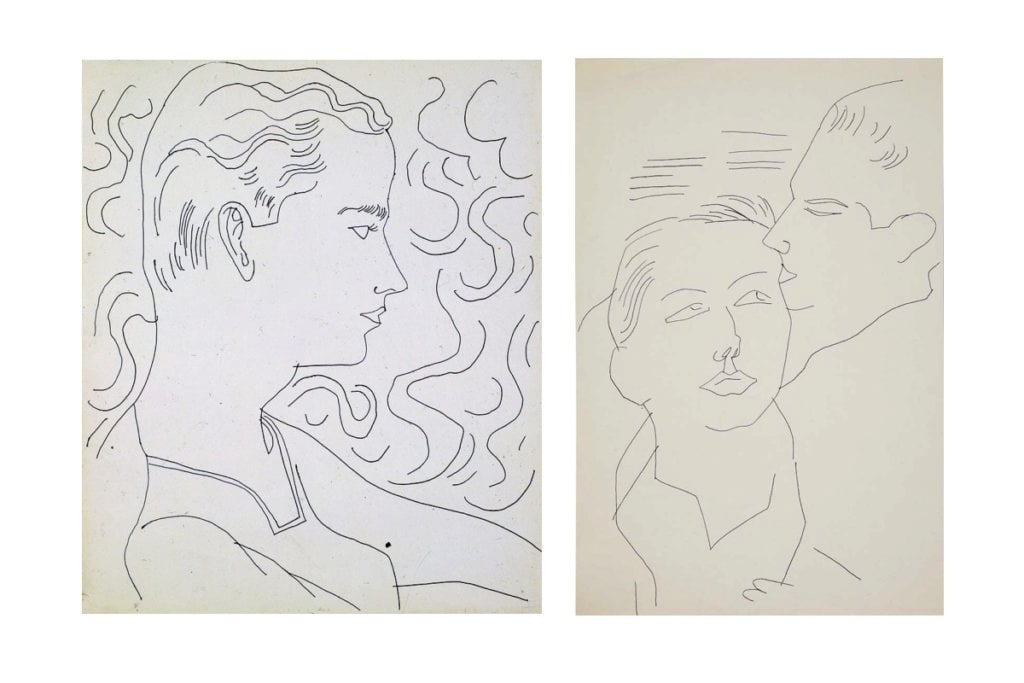Opinion
In the 1950s, New York Couldn’t Handle Andy Warhol’s Gay Art
THE DAILY PIC: In “Inventing Downtown” at the Grey Art Gallery, Warhol failed to get into one space the show explores.

THE DAILY PIC: In “Inventing Downtown” at the Grey Art Gallery, Warhol failed to get into one space the show explores.

Blake Gopnik

THE DAILY PIC (#1727): Today’s Pic, a pair of 1950s drawings by Andy Warhol, are most definitely not in the wonderful exhibition called “Inventing downtown: Artist-run Galleries in New York City, 1952–1965” at the Grey Art Gallery of New York University, although Andy himself would once have hoped that they might be.
The show does have a whole section devoted to the Tanager gallery, whose members included a number of Warhol’s college friends from Pittsburgh and which Warhol was desperate to join – without ever managing it. In the course of writing my Warhol biography I’ve spoken to three different members of the gallery, and they each remembered a different attempt that Warhol made to get his art shown there over a period of half a decade, and the three rejections that he received. The problem, as Tanager member Philip Pearlstein put it, and the others confirmed, was that the drawings he submitted to the gallery “were largely of line drawings of young men kissing with their tongues in each others mouth. The Tanager artists were macho oriented, and responded negatively.” (In his PhD dissertation, the Warhol scholar Neil Printz raised the interesting issue of how even Warhol had managed to depict such hidden, intrabuccal action.)
Throughout the 1950s, Warhol was one of a tiny handful of artists who insisted on building their art around issues of gay identity – and it got him precisely nowhere in that era’s art world. Although the pile of artists and galleries featured in the wildly comprehensive Grey show do suggest the stirrings of political, femininist and race-conscious art at the time, it is striking that gay sexuality seems to have still been taboo, or at least ignored, as a subject.
It’s also striking that, after a decade of being forced to show his homophilic art in some of New York’s less notable venues, in 1962, when Warhol broke into the big time, it was with soup cans and dollar bills and the other gender-neutral subjects of Pop art. He never quite abandoned his gay identity – soup comes with a hint of unmanly kitchen labor and Marilyn was a campy gay icon – but for some good time he took care to sublimate it. After all, even in a seemingly “out” film like Blow Job, Warhol never lets us know if the person blowing its hero is a man or a woman. (Images ©The Andy Warhol Foundation for the Visual Arts, Inc.)
For a full survey of past Daily Pics visit blakegopnik.com/archive.